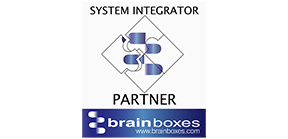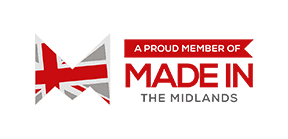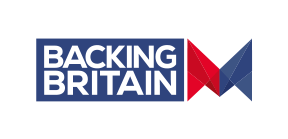Lean Industry 4.0: "Hybrid approach in lean manufacturing"
- By Brett Griffiths
- Lean Technology
- September 21 , 2018
- Share

Lean Industry 4.0 is a hybrid approach which remains lean principles such as reducing waste in process and people, better visual organisation, reduce downtime and number of downtime. At the same time the need for integration of big-data mining, analytics, cloud computing, connected systems, augmented and virtual reality and advanced robotics. This digitalisation will enable proven lean tools with new methodologies to help manufactures to reach new levels of operational excellence.
Lean Manufacturing Approach:
Lean has many years of implementation success stories, by using lean principles and tools have helped manufacturers to reduce operational complexity and improve productivity. Lean perfectly integrates human interventions by empowering workers to focus on value-adding activities by avoiding waste. A variety of tools are applied to achieve lean objectives: value stream mapping identifies waste and critical process steps, single-minute exchange of die reduces equipment downtime that results from tool changeovers, visual controls help operators identify the right times to replenish material or adjust equipment, and preventive maintenance reduces the number of breakdowns by proactively maintaining and controlling equipment at fixed intervals.
Industry 4.0 Approach
Recent digital technological advancement has helped Industry 4.0 to be widely accepted as the Fourth Industrial Revolution, hence the name Industry 4.0
Industry 4.0 is “a vision of the future of Industry and Manufacturing in which Information Technologies are going to boost competitiveness and efficiency by interconnecting every resource (data, people and machinery) in the Value Chain” (Politecnico di Milano, 2017).
Flexible manufacturing, big-data mining and analytics, cloud computing, connected systems, augmented and virtual reality and advanced robotics are the foundation for Industry 4.0. This means Sensors, machines, workpieces, and IT systems are connected along a value chain that extends beyond a single enterprise. These connected systems can interact and analyse data to predict failure, reconfigure themselves, and adapt to change. It allows creating a smart network of machines, products, component, properties, individuals and ICT systems in the entire value chain to have an intelligent factory and manufacturers can reach new levels of operational performance. They can, for example, advance from preventive to predictive maintenance, which means that maintenance tasks are performed only when necessary.
Lean Industry 4.0 Approach:
A sustainable lean implementation means the continual need on-going improvement, staying a profitable business means constant focus towards continuous improvement in productivity, efficiency, quality and customer satisfaction. Many companies have found lean management itself is not sufficient to address their operational excellence challenges.
"The primary objective of the lean approach and Industry 4.0 is operational excellence."
Lean Industry 4.0 is a hybrid approach which remains lean principles such as reducing waste in process and people, better visual organisation, reduce downtime and number of downtime. At the same time the need for integration of big-data mining, analytics, cloud computing, connected systems, augmented and virtual reality and advanced robotics. This digitalisation will enable proven lean tools with new methodologies to help manufactures to reach new levels of operational excellence.
"The integrated application of lean management and Industry 4.0 is the most effective way to reach the next level of operational excellence."
How Lean Industry 4.0 contribute operational excellence?
- Flexibility : Sensors and software enable more efficient changeovers
- Productivity : Predictive algorithms to improve autonomous maintenance
- Speed : Real-time data accelerate production management
- Quality : Data-driven quality control supports self-inspection
- Safety : Sensors and training in virtual reality improve working conditions

A BCG Study on Lean Industry 4.0 says:
"Lean Initiative or Industry 4.0 is alone applied can reduce conversion costs by approximately 15%
Integrated Lean Industry 4.0 approach reduce conversion cost by 40% The integrated approach can reduce costs related to poor quality by 20% and work-in-process inventory by 30%.”
Manufacturers that have successfully deployed Lean Industry 4.0 can reduce conversion costs by as much as 40% in five to ten years—considerably better than the reductions captured by best-in-class independent deployment of lean or Industry 4.0. The higher cost reductions are, in many cases, achieved with technologies that improve plant processes and structures by, for example, optimizing layouts. (See The Factory of the Future, BCG Focus, December 2016.) However, fewer than 5% of the manufacturing companies that we have observed have reached a high level of maturity in Lean Industry 4.0 (Reference : BCG When Lean Meets Industry 4.0 December 2017)
Start Free Trial
LEAN TRANSITION SOLUTIONS
The Old Vicarage, Pershore Road, Upton Snodsbury, Worcester, Worcestershire, WR7 4NR, United Kingdom.
Lean Transition Solution
-
Lean Industry 4.0 Solutions
- TITAN:Computerised Maintenance Management System
- Data Point:Computerised Balanced Scorecard
- Janus: Automated Shop-floor Data Capture System
- T-Card: Integrated Production Planning and Plant Level Execution System
- JDI: Maintenance Automation App
- Maximus: Integrated ERP System
- e-Contractor: Integrated In-house Contractor Management System
- Q-Point: Integrated Quality Management System
- Safety-Point: Integrated Health and Safety Management System
- Lean Assessment: Lean Audit and Assessment System
- Saisho: Lean 5S Audit and Assessment App
- Emergency Response App: To Manage Emergency Situations
-
Leadership 4.0 Solutions
- Your Career Academy(YCA): Learning and Development System
- YCA e-Learning : Management System
- MentorYou(MU): Mentoring App
- Leadership 4.0 : Leadership Transformation Program
- Lean Manufacturing Workshop
- Lean Manufacturing Consulting
- ILM Accredited Green Belt Training and Certification Program
- ILM Accredited Black Belt Training and Certification Program
- Software Development Service
- Resources
- Company
- Contact



